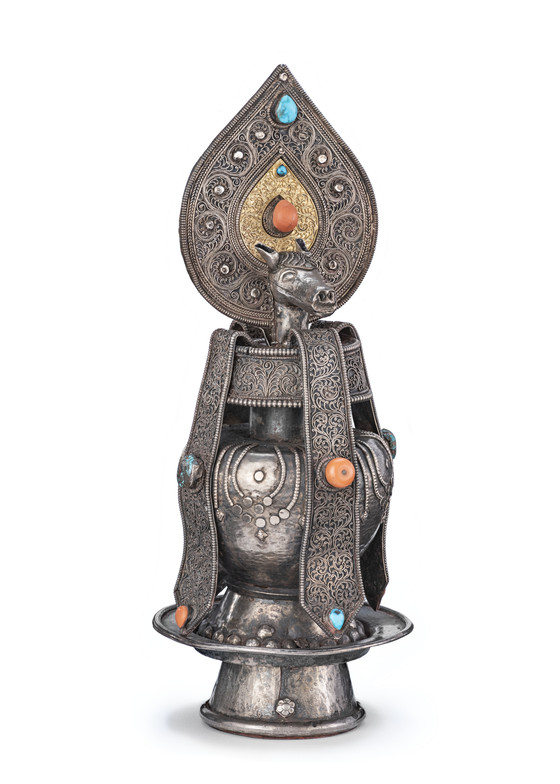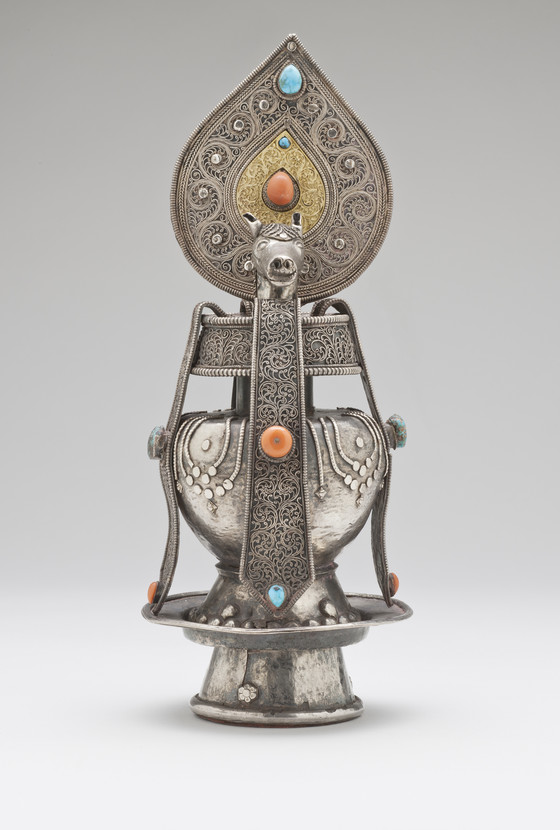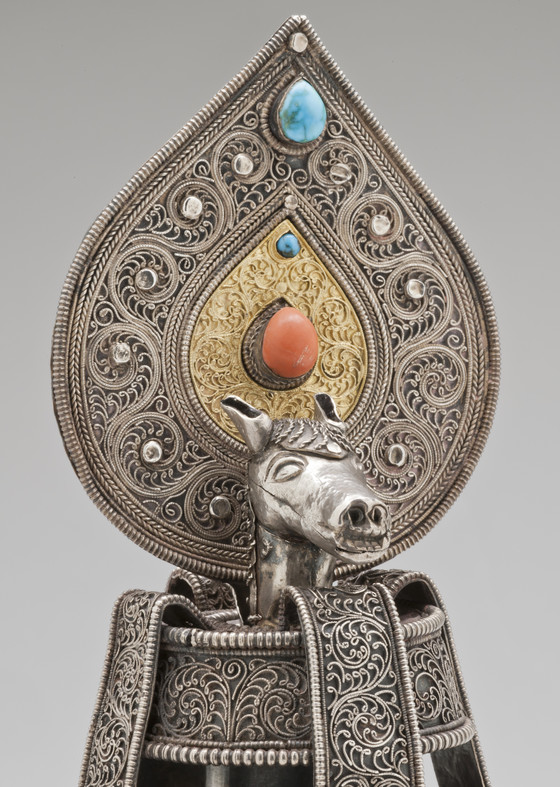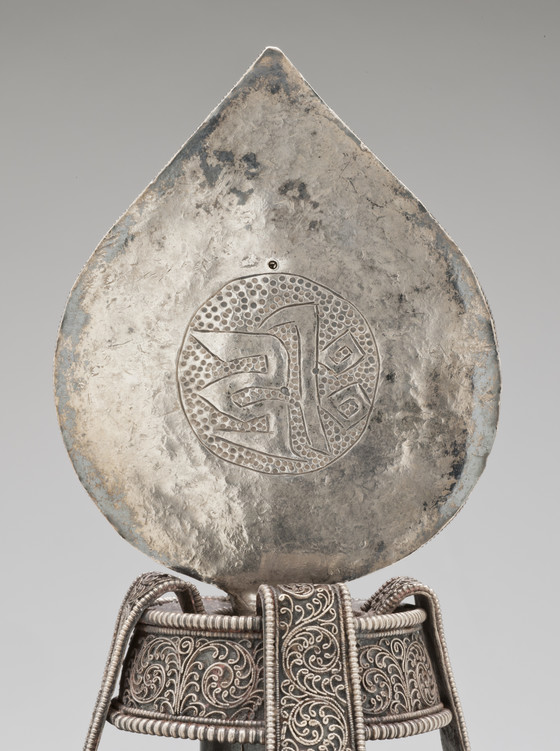Vase of Immortality with the Head of a Wind-Horse and the Precious Jewel




Please log in to add this item to your gallery.
View comments
No comments have been posted yet.
Add a comment
Please log in to add comments.
Please log in to add tags.
* Nearly 20,000 images of artworks the museum believes to be in the public domain are available to download on this site.
Other images may be protected by copyright and other intellectual property rights.
By using any of these images you agree to LACMA's Terms of Use.
Vase of Immortality with the Head of a Wind-Horse and the Precious Jewel
Tibet (by a Newar artist), 18th-early 19th century
Furnishings; Accessories
Silver and silver filigree, gold and gold filigree; inset with coral and turquoise
a) Finial: 5 x 3 x 1/2 in. (12.7 x 7.62 x 1.27 cm); b) Stopper: 2 1/4 x 3/4 x 1 1/4 in. (5.72 x 1.91 x 3.18 cm); c) Vase height: 5 3/4 in. (14.61 cm); c) Vase diameter: 3 3/4 in. (9.53 cm); a-d) Overall height: 9 1/2 in. (24.13 cm); a-d) Overall diameter: 3 3/4 in. (9.53 cm)
Gift of Julian Sands (M.2011.157.3a-c)
Not currently on public view


